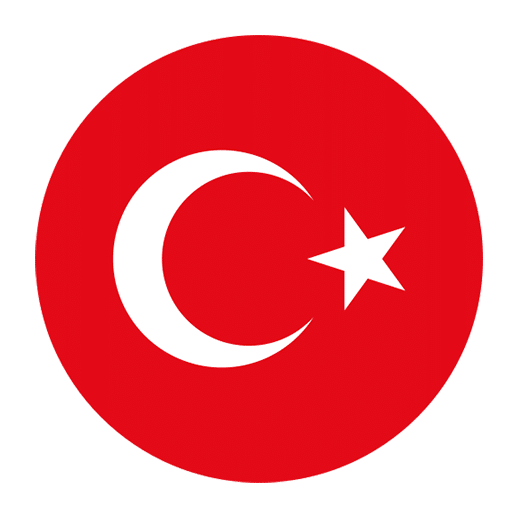Learning a new language is always an exciting journey filled with countless discoveries. Turkish, with its rich history and unique structure, offers a fascinating linguistic adventure. One particularly interesting aspect of Turkish is the subtle yet significant differences between words that may seem related or even similar to English speakers. In this article, we will explore the intriguing distinction between the Turkish words “ip” and “ipek,” which translate to “rope” and “silk” respectively in English.
Understanding “İp” (Rope)
The Turkish word “ip” is quite straightforward in its meaning. It translates directly to “rope” in English. This word is commonly used in everyday Turkish language and can refer to any kind of string, cord, or rope. Here’s a closer look at how “ip” is used in different contexts:
1. **Basic Definition**:
“İp” refers to a long, thin, and flexible material made from fibers twisted together. It can be used for binding, tying, or fastening.
2. **Common Uses**:
– **Ev İpi (Household Rope)**: This is the kind of rope you might find in a Turkish household, used for various domestic purposes such as hanging laundry or tying items together.
– **Dağcılık İpi (Climbing Rope)**: In the context of outdoor activities, “ip” is crucial for safety in climbing and mountaineering.
– **Balıkçılık İpi (Fishing Line)**: Fishermen use a specific type of “ip” designed for durability and strength.
3. **Phrases and Idioms**:
– **İp atmak**: Literally “to throw a rope,” this phrase can mean to offer help or to intervene in a situation.
– **İpi koparmak**: Literally “to cut the rope,” this idiom is used to describe breaking off a relationship or severing ties with someone.
Examples in Sentences
– “Çamaşırları asmak için bir **ip** aldım.”
(I bought a **rope** to hang the laundry.)
– “Dağcılar güvenli bir **ip** kullanarak tırmandılar.”
(The climbers used a secure **rope** to ascend.)
Discovering “İpek” (Silk)
The word “ipek” in Turkish translates to “silk” in English. Silk, as many know, is a luxurious and soft fabric produced from the fibers of the silkworm. The word “ipek” carries connotations of elegance and delicacy in Turkish, much like it does in English. Let’s delve into the various ways “ipek” is used:
1. **Basic Definition**:
“İpek” refers to the fine, soft, and lustrous fiber produced by silkworms, as well as the fabric made from this fiber.
2. **Common Uses**:
– **İpek Kumaş (Silk Fabric)**: This is the most common reference, used in the context of clothing and textiles.
– **İpek Şal (Silk Shawl)**: A popular item of clothing in Turkish culture, often worn for special occasions.
– **İpek Böceği (Silkworm)**: The insect responsible for producing the silk fibers.
3. **Phrases and Idioms**:
– **İpek gibi**: This phrase means “like silk,” and is used to describe something very soft or smooth.
– **İpek yolu**: Refers to the historical “Silk Road,” a network of trade routes that connected the East and West.
Examples in Sentences
– “Yeni elbisem **ipek** kumaştan yapıldı.”
(My new dress is made of **silk** fabric.)
– “Bu şal çok yumuşak, **ipek** gibi.”
(This shawl is very soft, like **silk**.)
Contrasting “İp” and “İpek”
Despite their similar sounds, “ip” and “ipek” refer to entirely different objects with distinct uses and cultural implications. Understanding the differences between these words is crucial for language learners, as it helps to avoid confusion and ensures accurate communication.
1. **Material Composition**:
– **İp**: Typically made from various materials such as cotton, nylon, or polyester, depending on its intended use.
– **İpek**: Specifically refers to the natural fiber produced by silkworms, known for its smooth texture and sheen.
2. **Cultural Significance**:
– **İp**: Seen as a practical, everyday item with a wide range of uses.
– **İpek**: Associated with luxury, elegance, and historical significance, especially due to its role in trade along the Silk Road.
3. **Economic Value**:
– **İp**: Generally inexpensive and widely available.
– **İpek**: Often considered a high-value item due to the labor-intensive process of silk production.
Practical Tips for Learners
1. **Pronunciation Practice**:
– Ensure you practice the subtle differences in pronunciation. “İp” is short and sharp, while “ipek” has a softer, more elongated sound.
2. **Contextual Learning**:
– Pay attention to the context in which these words are used. “İp” is more likely to appear in everyday, practical contexts, while “ipek” will often be found in discussions of clothing, textiles, and luxury items.
3. **Cultural Immersion**:
– Engage with Turkish culture to see these words in action. Visit Turkish markets, watch Turkish films, or read Turkish literature to gain a deeper understanding of how “ip” and “ipek” are used.
Conclusion
The distinction between “ip” and “ipek” in Turkish is a perfect example of how language learning involves more than just memorizing vocabulary. It requires an understanding of cultural contexts, material properties, and the nuances of pronunciation. By exploring the differences between these two words, learners can gain a deeper appreciation for the richness of the Turkish language and its cultural heritage.
As you continue your Turkish language journey, remember to pay attention to these subtle differences and embrace the learning process with curiosity and enthusiasm. Whether you’re discussing the practicality of a rope or the elegance of silk, each word offers a unique insight into the world of Turkish language and culture.

